Sometime during the night my Viking River cruise ship left the castles of the Middle Rhine behind and turned left onto the Main River. Just east of Frankfurt we crossed over into Bavaria, an area of Germany that most associate with snow-capped alps, giant mugs of beer, alpine meadows, and Lederhosen. I was quickly disavowed of any such notions, however, upon arrival in Miltenberg. One of the most adorable of all the Bavarian villages, Miltenberg is located in the Lower Franconia district of Bavaria.
“We are Franconians, not Bavarians,” our tour guide said emphatically and with a little laugh.
Although Upper Franconia, Lower Franconia, and Middle Franconia constitute the three northernmost districts of Bavaria, they have a much different history than the rest of the State. They take their name from the Franks, a Germanic tribe that had conquered most of western Europe by the mid-8th century. After Napoleon defeated the Holy Roman Empire in 1806, Bavaria became a kingdom and the Franconian districts were subsequently annexed to Bavaria in 1815.
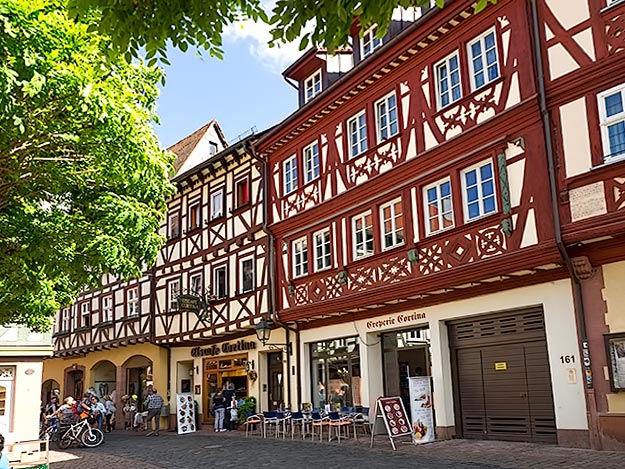
Our tour guide’s comment was partly tongue-in-cheek, but also underscored the cultural differences between the two regions. Straddling the serpentine Main River, the landscape of Franconia is predominantly rolling hills. While never rising to the height of what might be called mountains, the hillsides are the perfect climate for vineyards which produce high quality dry red wines, rather than the beers for which Bavaria is known. Weißwurst, a white sausage made from minced veal and pork back bacon, may be haute cuisine in Bavaria, but Franconians prefer Bratwurst and Sauerbraten. Though Bavaria is overwhelmingly Catholic, the population of Franconia is a mixture of Protestant and Catholic. Even the German dialect is different; Franconians speak East Franconian German, rather than the Austro-Bavarian dialect spoken in the rest of Bavaria.
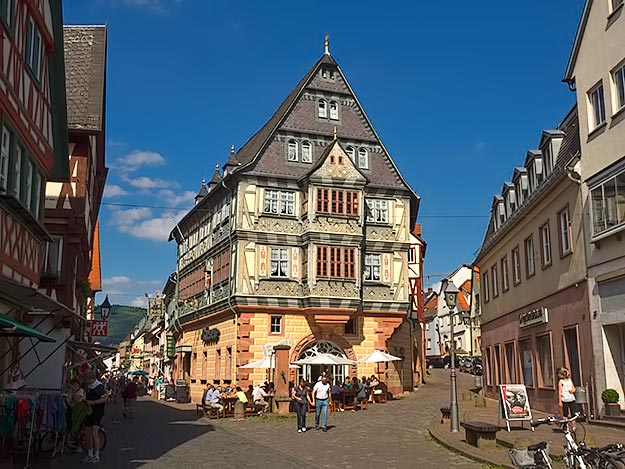
Franconia is also home to a some of the most beautiful, nearly secret towns in Germany that haven’t yet hit the tourist radar. Our first stop, Miltenberg, certainly qualified in this respect. Its location on the ancient trade route between Nuremberg and Frankfurt earned Miltenberg the status of a market town in medieval times. That success translated to disaster during the 30 Years War, when the town’s population was decimated and it disappeared from the economic landscape. Yet even this became a silver lining; as a town of little consequence, it escaped bombing during World War II. I paused every few seconds to take another photo of its gorgeous half-timbered houses and palaces of pink sandstone, but the storybook beauty of Gasthaus zum Riesen (Giant’s Guesthouse), stopped me in my tracks. Said to have been in continuous use since the 12th century, it is the oldest Inn in Germany, if not in the world.

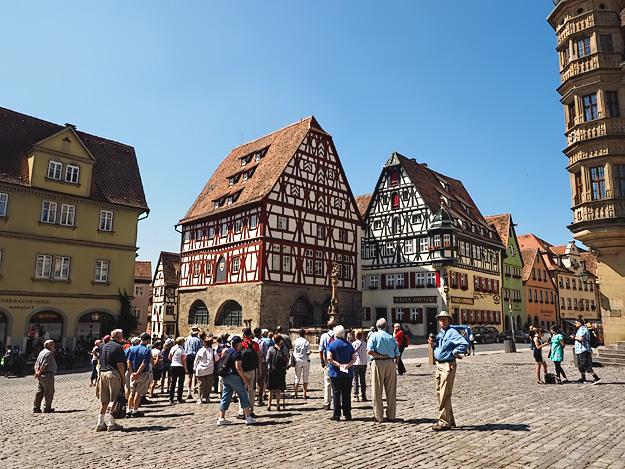
Just as stunning was Rothenburg ob der Tauber, a medieval Bavarian village in Middle Franconia where every structure seemed more lavish than the one before it. Though Rothenburg’s claim to fame is its world renowned Christmas Shop, I was more intrigued by the ancient stone towers studding the thick stone fortifications that still ring the city, and by the “Snowballs” on display in bakery windows – strips of left-over pie-dough formed into balls and dusted with powdered sugar, nuts, cinnamon, or dipped in chocolate.
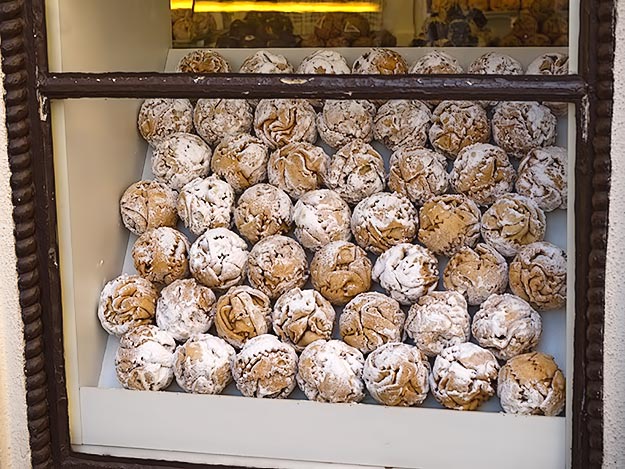
Further along the Main River, in Upper Franconia, we stopped at Bamberg, often referred to as the “Franconian Rome” for the seven hills upon which it was built. Though each hill is crowned by a cathedral worthy of a visit, Bamberg Cathedral (Bamberger Dom) should not be missed, as it contains the tombs of Emperor Henry II and Pope Clement II. Across the courtyard, the Rose Garden of the Baroque New Residence (bishops’ palace) offers lovely views over the city. Since it was a scorcher of a day, after our visit to the Dom, many in our group adjourned to the stone-cool cellars of the town pubs to sample Bamberg’s famous smoked beer, which is said to taste like bacon, but I was more interested in the UNESCO listed city center.
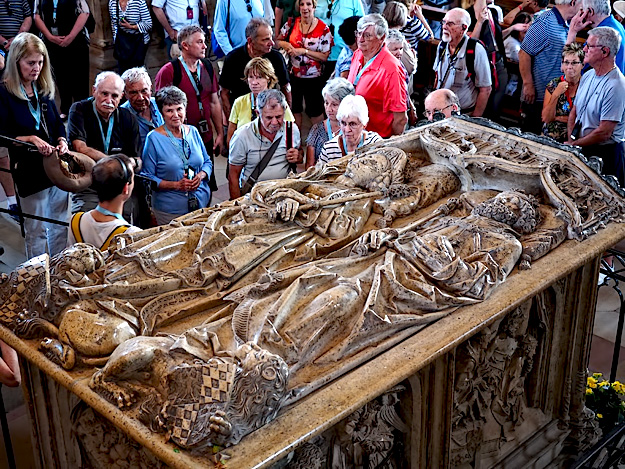
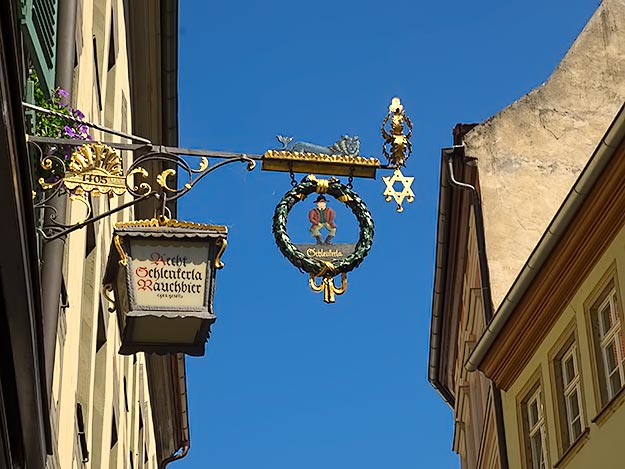
The Old Town Hall (Altes Rathaus) is unique for its location in the middle of the Regnitz River. When the original town hall burned down in the mid-15th century, the Bishop refused to allow its rebuilding on any land he controlled, as the citizens were already agitating for freedom and relief from taxes. The clever residents drove piles into the center of the river, creating an artificial island upon which they raised the structure in 1467, connecting it to land via twin arched bridges. Originally built with Gothic influences, it was embellished with Baroque and Rococo touches during the 1700’s, including the exquisite trompe l’oeil frescoes that adorn its facade. Today, the Town Hall it is the centerpiece of the historic center of Bamberg.
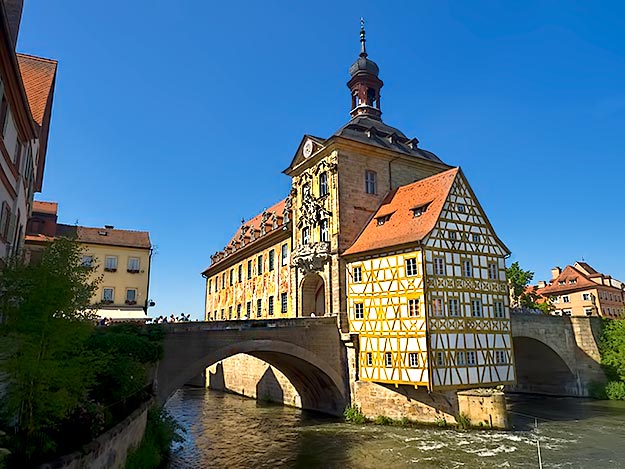
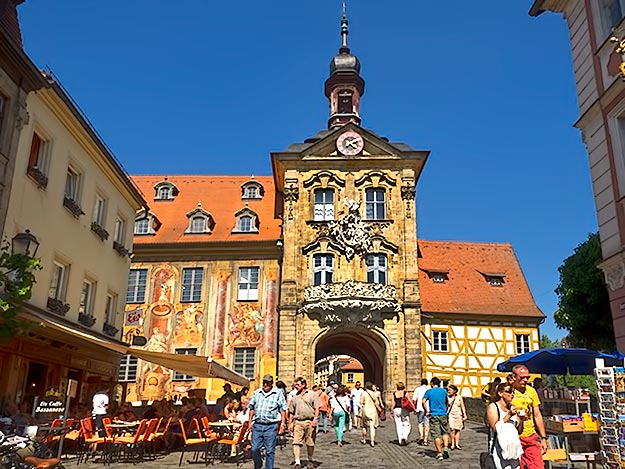
Our final destination in Franconia was Nuremberg, considered by most to be the economic and cultural center of Franconia. Unlike many of the smaller Bavarian villages that were spared during World War II, 90 percent of Nuremberg was demolished by Allied bombing missions. Today, most buildings, including the Imperial Castle built upon a sandstone outcropping overlooking the town, are restorations or recreations funded by the Marshall Plan. More intriguing is the town’s role during the Nazi era. Hitler chose the city as the site of his Nuremberg rallies, which were a crucial element in his rise to power. It was in Nuremberg that the anti-Semitic Nuremberg Laws, which revoked German citizenship for all Jews and other non-Aryans, were passed in 1935. After the war, the city was chosen as the location for the Nuremburg trials, an international tribunal that tried those involved in war crimes and crimes against humanity. Today, on the site where Hitler held his ominous rallies, the Documentation Center contains exhibits that expose the manipulative nature of Nazi propaganda.
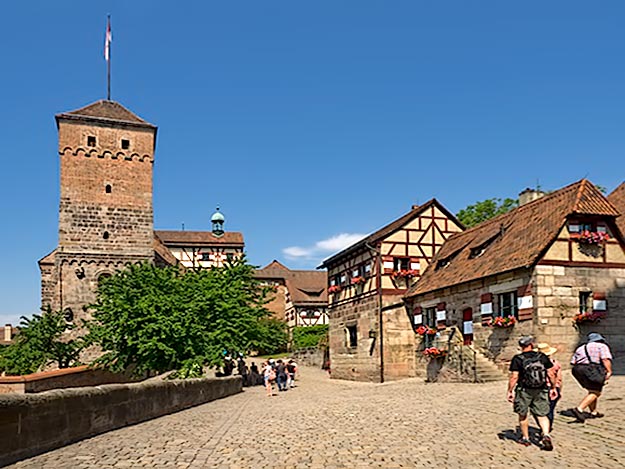
Nuremberg, however, offers more than gloomy WWII history. Each day throughout the year, vendors hawk Nürnberger specialties from booths in the Hauptmarkt, a square that fronts the Church of Our Lady. Beginning on the Friday before the first Advent (generally late November) the Hauptmarkt transforms into one of Germany’s largest Christmas markets, attracting more than a million shoppers seeking traditional Christmas decorations and specialty foods. One of these, a type of gingerbread known as Nürnberger Lebkuchen, has become so popular that it is sold year round at the Hauptmarkt. After an hour of strolling beneath red and white striped awnings, sampling local cheeses, jams, cookies, and gingerbread, I will forever associate Nuremberg with the Hauptmarkt, rather World War II.
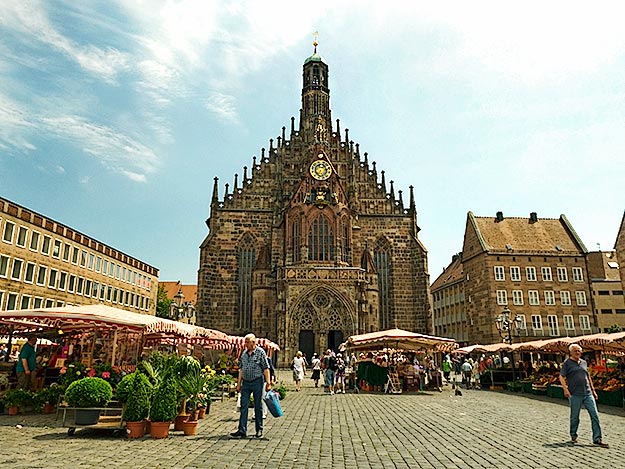
Late that afternoon, I re-boarded my Viking River cruise ship, sad that we would soon be leaving the Franconia districts and the gorgeous Bavarian villages behind. My head was muddled with history, but one thing was crystal clear. I will never again think of Franconians as Bavarians.
Note: I was a guest of Viking River Cruises during my Grand European Tour, however, the receipt and acceptance of complimentary items or services will never influence the content, topics, or posts in this blog. I write the truth, the whole truth, and nothing but the truth. Viking offers itineraries on the great rivers of the world, including destinations in Europe, Egypt, China, Southeast Asia, Russia, and soon, in the U.S.
